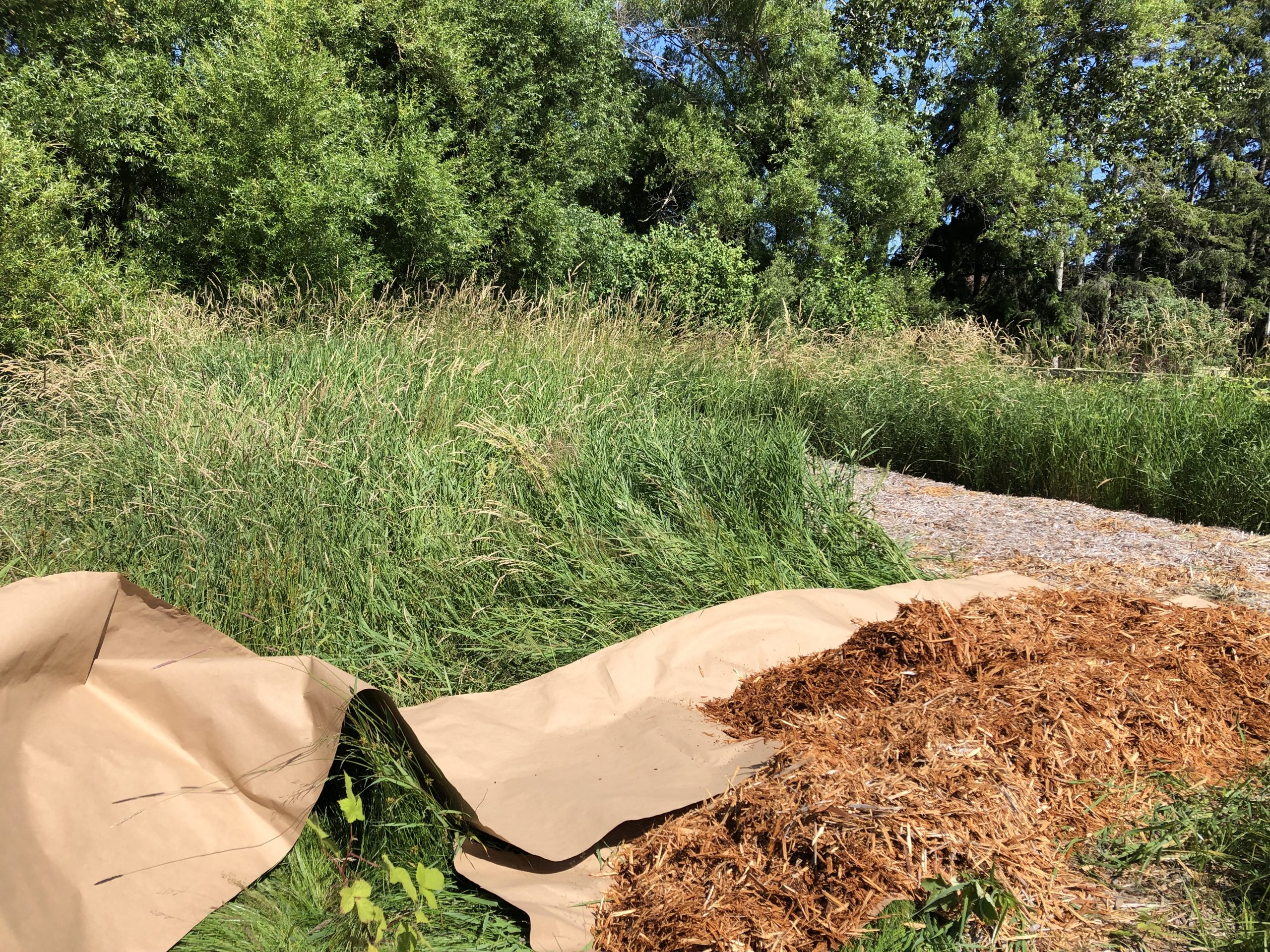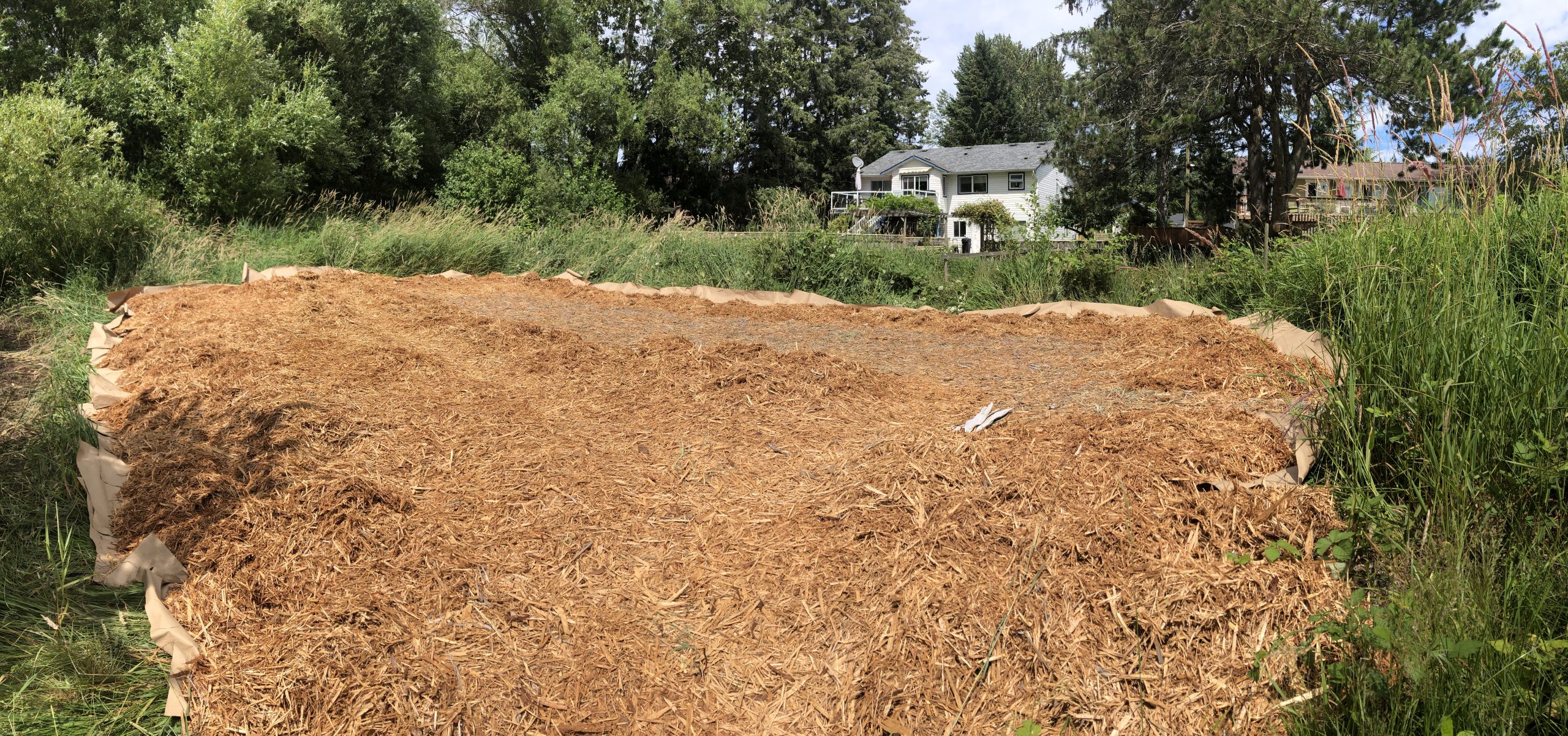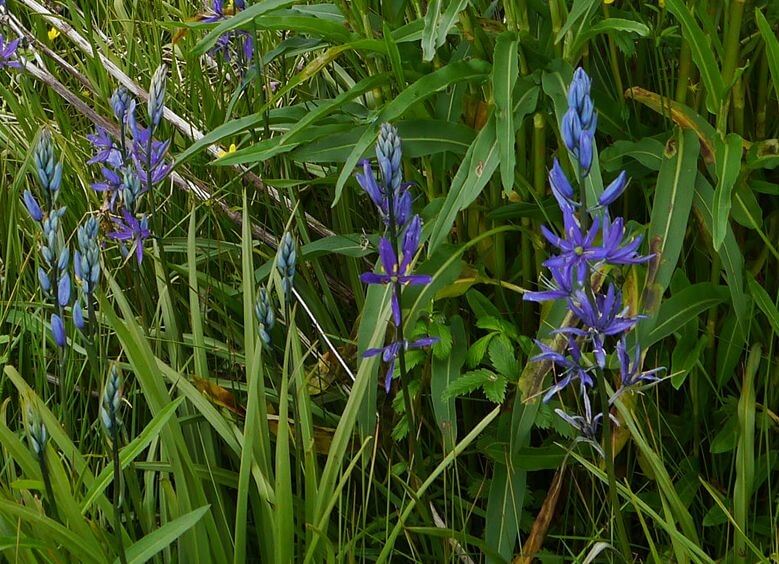Technician Tuesday Report – Camas Monitoring and Invasive Plant Management – July 19
Preparing to mulch in the upper end of Glen Urqhuart Creek ~ By C. Tipton
After mulching in the upper end of Glen Urqhuart Creek ~ By C. Tipton
Common Camas (Camassia quamash) ~ By K. Kaptein
This week, Cain and Renée spent some time at the Glen Urquhart site and a short morning at Hollyhock flats beside Kus-kus-sum. There, they inspected the camas (Camassia sp.) to determine if the plants would be seeding soon. Once ready, 10% of the seeds will be collected for planting in case the current population does not survive. The camas was not ready however so they will return to Hollyhock flats at a later date.
At the Glen Urquhart site, weeding and mulching along the creek was the main activity for the week. This is to prevent further growth of invasive plants, namely, reed canary grass (Phalaris arundinacea). These areas had been planted with native vegetation the previous year and mulch was added to prevent unwanted grasses and weeds from outgrowing and out-shading the new seedlings. Invasive species are experts at growing in difficult environments however and found a way to sprout through. The techs need to stay on top of invasive plant management to ensure the native plants have room to grow and access to sunlight as the goal is to have them grow to maturity and reclaim the area.
Slough sedge (Carex obnupta) was found in one location of the site. Slough sedge is a native wetland grass species that provides erosion control and streambank stabilization by holding the soil together with its root systems. Because we want this important native species to thrive, the reed canary grass had to be hand pulled by Cain and Renée as broad-spectrum mulch application would also kill the slough sedge.
On Friday, the techs were joined by two volunteers to help with the continued plant management. It’s always great to have a few extra hands for weeding, and new introductions and conversation made the afternoon very enjoyable.
It was a great week in the field with maybe a few too many woodchips in their boots but beautiful sunny days and opportunities to learn new skills made for an excellent shift.
Related Posts
Gwen Janz
Meet our new Forage Fish Lead Biologist!
Eelgrass Update
In the fall our restoration team surveyed the three eelgrass beds which were planted with the help of our volunteers back in June. The beds are looking healthy!
Kus-kus-sum: End of Season Wrap-up
Now that we have put the Kus-kus-sum site to bed for the winter, we wanted to give you all a little update on how things progressed this season – lots happened!
Kate McKeown
Meet our new Forage Fish Technician!
Greenshores at Dyke Road Park – Reimagining a Park
On September 20 and 21, over 20 people were on site to help with planting at the Comox Valley Regional District’s (CVRD) Dyke Road Park redevelopment project.
Gartley Beach Green Shores for Homes Project
Project Watershed is teaming up with the CVRD and the Stewardship Centre for BC to do some shoreline restoration at Gartley Beach in Royston.




